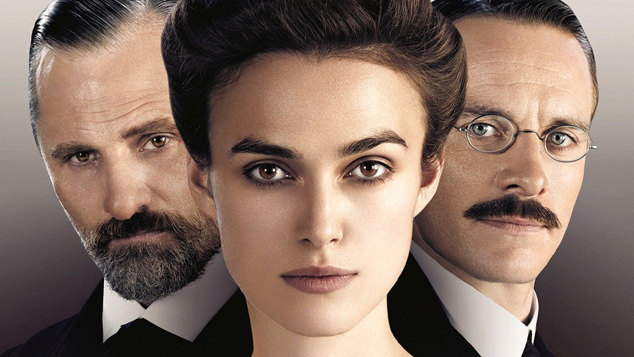 (MA) Directed by David Cronenberg
(MA) Directed by David Cronenberg
In Zurich in 1904, a 19 year-old Russian woman was dragged into a psychiatric hospital, screaming and violently lashing out. In those times, men in suits had methods for dealing with hysterical women – methods closer to torture than healing. Novice psychiatrist Carl Jung (Michael Fassbender) decided to treat the young woman, Sabina Spielrein (Keira Knightley) with an experimental ‘talking cure’, introduced by Sigmund Freud (Viggo Mortensen).
As time progresses Spielrein’s condition improves and she makes startling revelations to her confessor. Cigar-sucking Freud believed that sexuality was the core of people’s problems but Jung felt that more notice needed to be taken of the unconscious. Jung begins to question Freud’s theories, feeling that the talking cure is potentially dangerous for the patient. In treating Spielrein, Jung found that he was overcome by dark desires and radical psychoanalyst Otto Goss (Vincent Cassel) encourages him to liberate rather than repress these desires. Jung begins a tempestuous affair with his patient, who recovers enough to continue her university studies and become a psychoanalyst herself.
Christopher Hampton wrote the screenplay from his play, which was based on a non-fiction book A Most Dangerous Method: The Story of Jung, Freud, and Sabina Spielrein by John Kerr. Even though it is highly romanticised, the film is a sumptuous period drama that sets the scene for rigorous discussion of the early theories of psychoanalysis by a director who is not afraid to explore the extremes of psychosexual ‘dysfunction’.
What is missing is that Sabina Spielrein was one of the first female psychoanalysts. Her contributions were lost to history for many years and many of her papers have still not been translated. In 1970, papers and letters that she exchanged with Jung were uncovered and it became obvious that she introduced the connection between sex and death (or loss of self) – a connection that Freud would later adopt as part of his theory in Beyond the Pleasure Principle (1920).
Lezly Herbert





